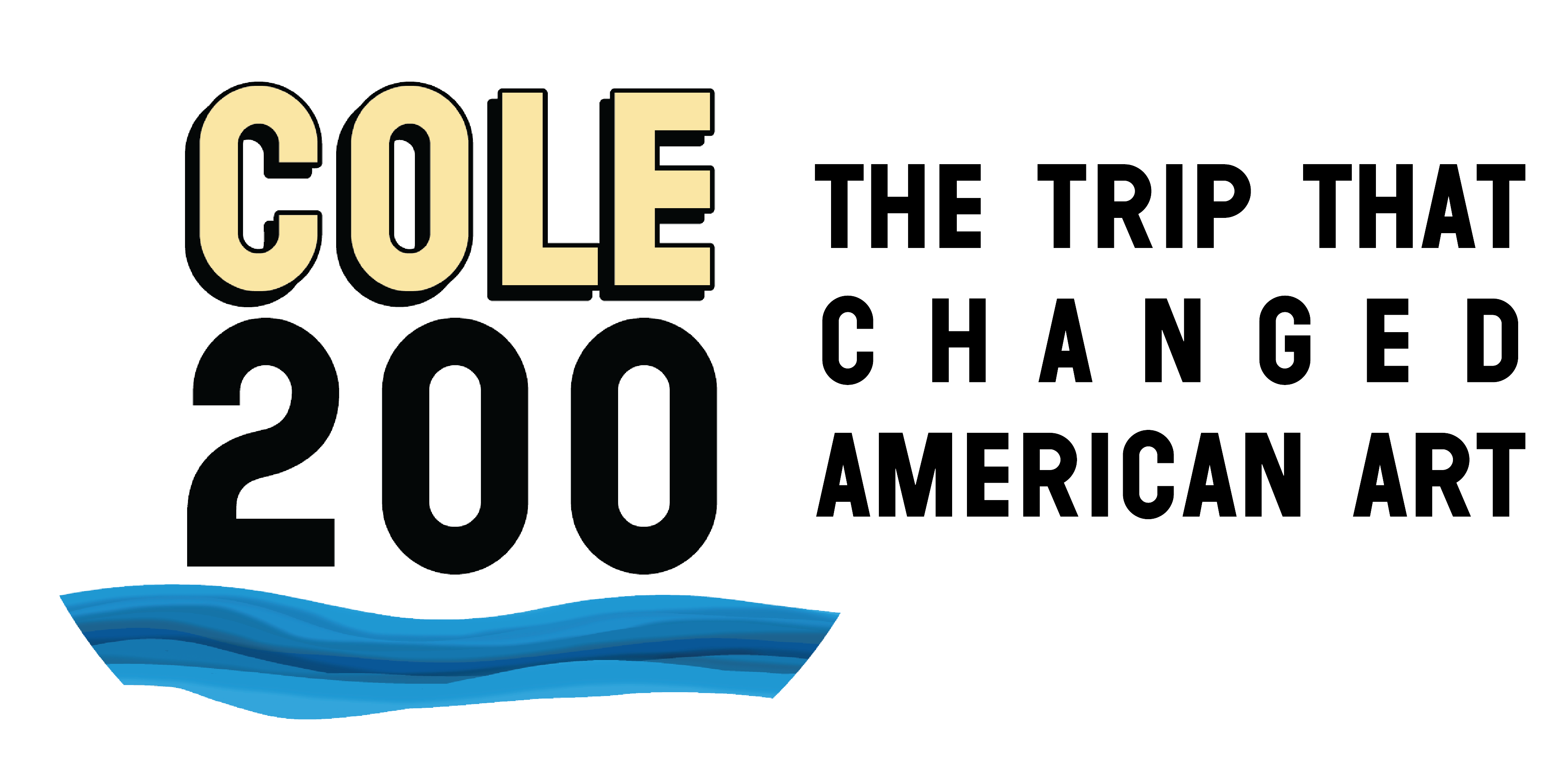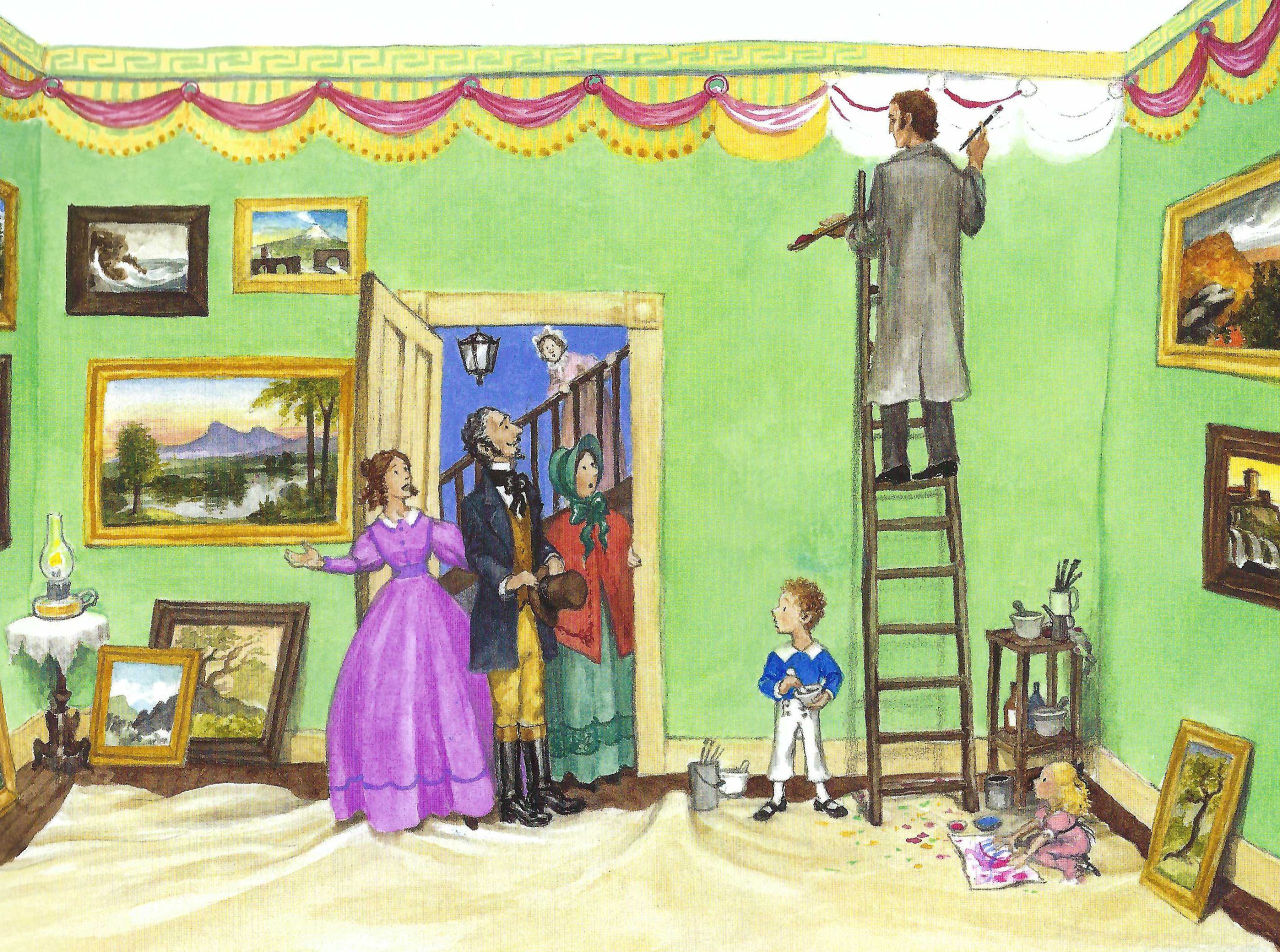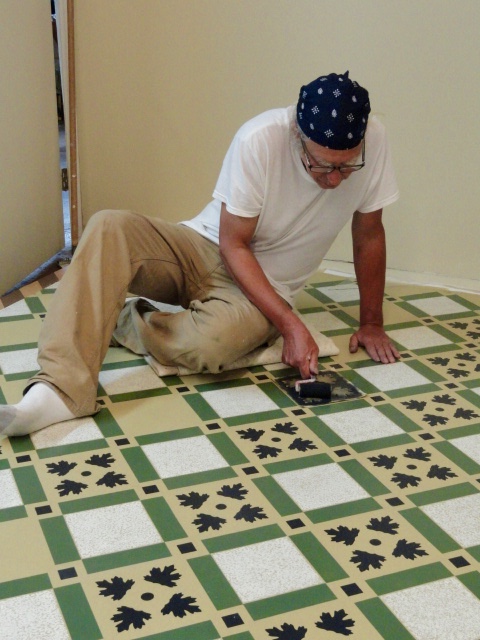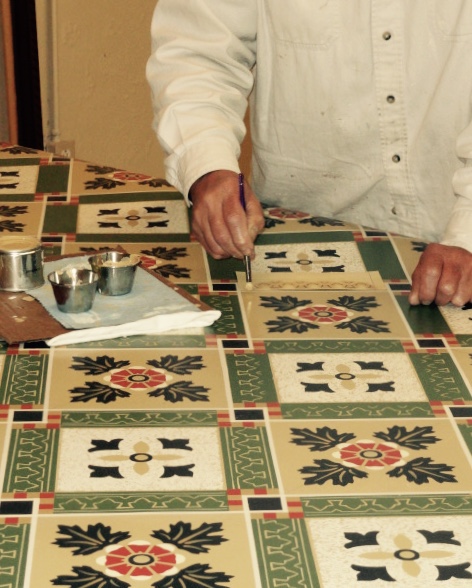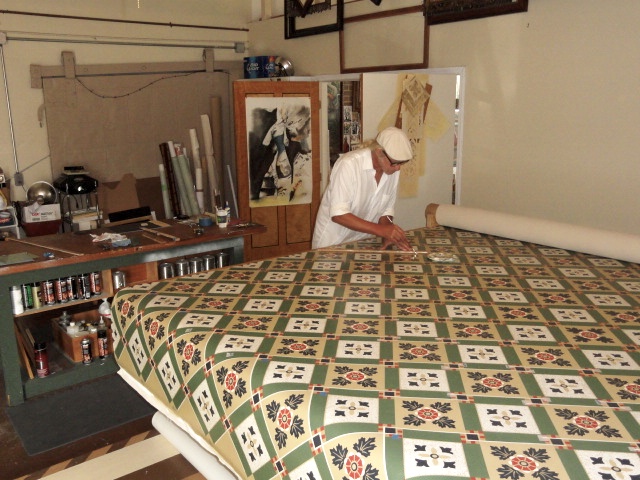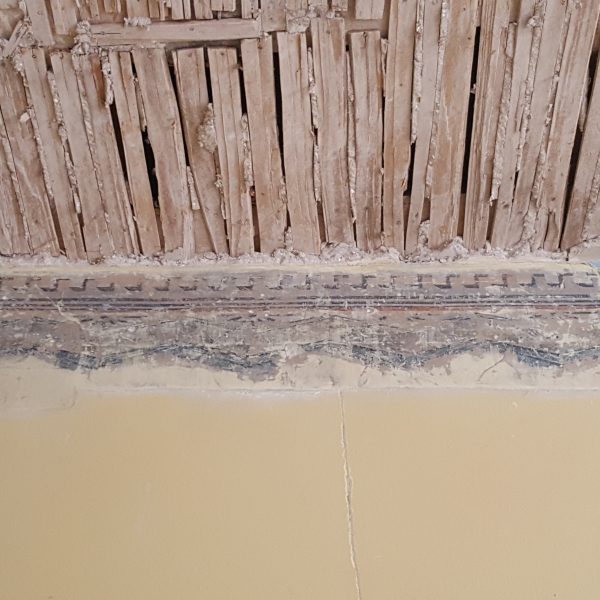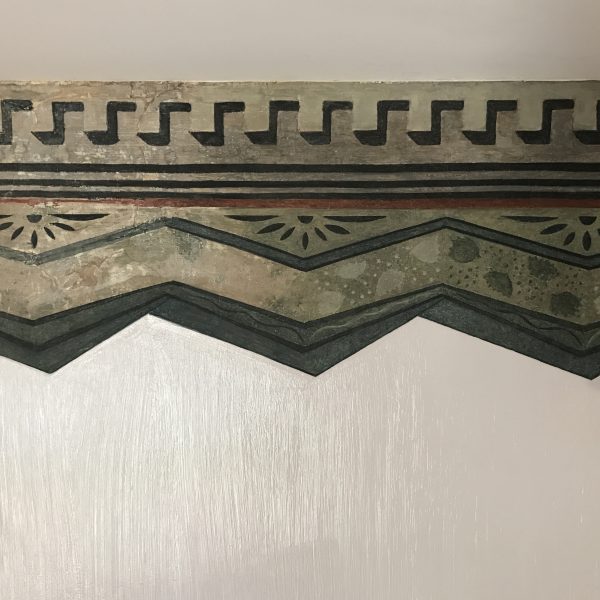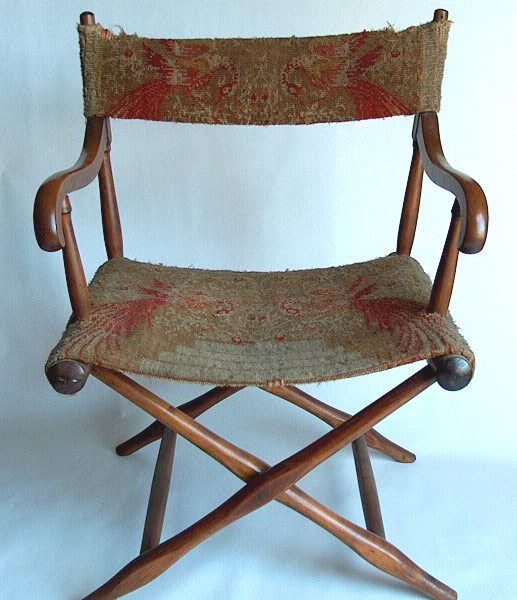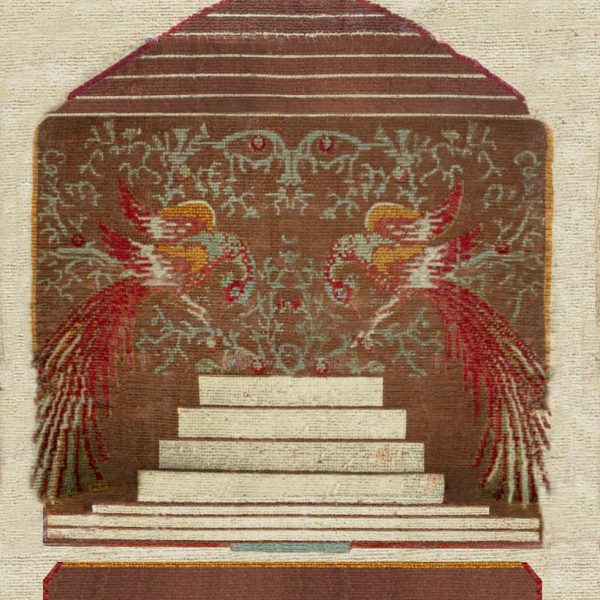Historic Interiors
“More than a decade of detective work has revealed that Thomas Cole transformed his home’s interior into a dramatic three-dimensional work of art.”
—Jean Dunbar, PhD, Historic Interiors Expert
Illustration by Hudson Talbott from Picturing America
In 1836, Thomas Cole married Maria Bartow and moved into the federal-style Main House in Catskill with her family. As a celebrated painter and recognized architect, who also had experience in decorative arts manufacturing, Thomas Cole embarked on a major redesign of the interiors of the home, which was originally built in 1815.
Cole selected new colors, textiles, floor coverings, and finishes, and hand-painted decorative borders onto the walls where his paintings were displayed for patrons in the two front parlors and his red gallery library.
Cole’s original painted boarders were first discovered beneath layers of modern paint in 2014 and have since been conserved for visitors to experience today. The restoration of the interiors is led by Jean Dunbar, PhD, Historic Interiors. The project team includes Carrie Feder, Historic Interiors Expert, Matthew Mosca, Historic Paint Analyst, and Margaret Saliske, conservator.
Entry Hall
The entryway serves as your introduction to the Main House, a space where Thomas wanted to make an impression.

PAINT COLORS
Determined through microscopic analysis of wall samples, the periwinkle wall color from Thomas Cole’s period of residency has been restored to its original splendor. Blue paint in homes was previously very expensive, but as a professional painter, Cole had access to a cheaper synthetic blue ultramarine pigment invented in 1826.
Walls: Benjamin Moore Aura Interior Paint in Matte in a custom lavender: S1: 0 X 5.25, W1: 3 X 6.25, M1: 1 X 30, B1: 1 X 22
Trim: Allbäck Linseed Oil Paint in color “Old White”
Stair Treads: Benjamin Moore Alkyd Satin Impervo in custom color
Stair & Landing Floor: Benjamin Moore in color Golden Retriever 2165-30
FLOOR CLOTH
The geometric floor covering is known as a floor cloth: a piece of canvas coated with layers of paint, which is then coated with layers of varnish. It was a popular feature in 19th-century homes because it was inexpensive and easy to clean. In his youth, Thomas Cole painted floor cloths for his father’s business. This is a hand-painted recreation of a historic design.
The pattern is taken from a scrap of floor cloth in the collection of the Fenimore Art Museum in Cooperstown, NY. The scrap was found on the floor of a coach owned by the Cooper family. Thomas Cole and James Fenimore Cooper were close friends, and we know Cooper visited Thomas at his home here in Catskill. Because there was no surviving fragment of the floor cloth from this space, the pattern for the recreation was chosen because it was a historic pattern available to Thomas Cole and because the colors of the scrap closely matched the artist’s chosen color scheme for the hallway.
Reproduced by John Kraus
The floor cloth reproduction was completed by artist John Kraus, a decorative painter who specialized in the restoration of 18th and early 19th-century homes for over three decades.
STAIR CARPET
Reproduced by Thistle Hill Weavers
Thistle Hill Weavers of Cherry Valley, NY created the striped stair carpet, a historically accurate reproduction of weaving techniques and styles of the period.
West Parlor
The West Parlor was a formal room where Thomas and the family met with visiting friends, patrons, and fellow artists. Thomas’s decor for the West Parlor incorporated the presentation of his paintings and owed much to his recent extended stay in London. He was particularly influenced by his visit to London and to the classical home of Samuel Rogers. Rogers was a wealthy English poet with a vast collection of paintings, and the decor of his home was largely inspired by recent trips to Italy. This room also features the original marble mantel purchased by John Alexander Thompson, Thomas’s uncle-in-law.
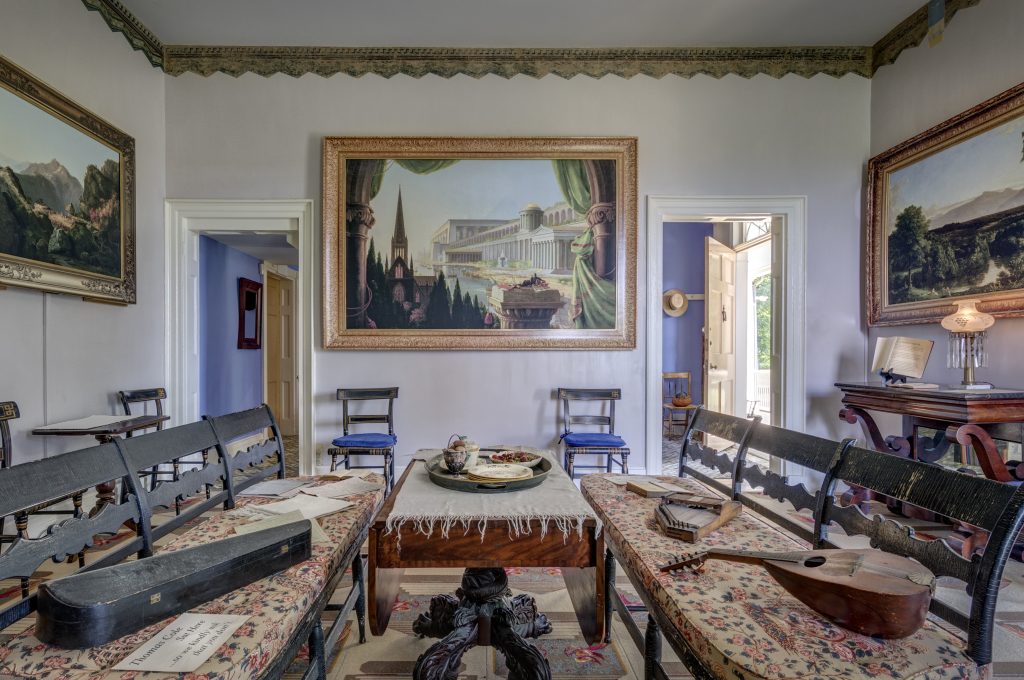
PAINT COLORS
Thomas’s scheme for the West Parlor owed much to his stay in London and his visits to the home of Samuel Rogers. Paintings of Rogers’s home show canvasses hung alongside large windows. As redesigned by Thomas, Cedar Grove’s parlors echoed this style. He presented paintings – most of them his own – alternating with tall windows. As in Rogers’s rooms, pictures became windows, and windows, pictures. Additionally, Thomas was inspired by the purple-gray color of Rogers’s walls and reproduced it here in the West Parlor. The tint flatters both the pictures hung against it and the scenery viewed through the windows.
Walls: RGH Artists’ Oil Paints, Inc. in custom color
Wall Primer: Benjamin Moore Fresh Start Alkyd Primer 024 tinted to match wall color
Trim: Allbäck Linseed Oil Paint in color “Old White”
Reproduction
Jean Dunbar, PhD, Historic Interiors, Matthew J. Mosca, Historic Paint Analyst, and Margaret Saliske, conservator completed the analysis and restoration of the wall color.
THOMAS COLE’S DECORATIVE WALL PAINTING
If you look up in the West Parlor, you will see an original work of art by Thomas Cole. To simulate the dramatic effect of a decorated Roman room, Thomas painted the walls of the West Parlor with a decorative border to give the room an antique Neoclassical flavor of ancient Pompeii. A mixture of stencil work and free-hand painting, the artwork imitates fashionable architectural wallpaper borders of the time inspired by Roman originals. Thomas Cole’s decorative painting in this room speaks to his experience as a designer of decorative wallpaper in Steubenville, Ohio, and his early experience as a teenager in England working in a Lancashire cotton-printing calico mill.
The border was conserved and restored through a highly skilled technique called “inpainting.” The conservator painted up to and around the original surviving flecks of paint to fill in missing areas and give visitors the impression Cole intended.
Conservation
Jean Dunbar, PhD, Historic Interiors, Matthew J. Mosca, Historic Paint Analyst, and Margaret Saliske, conservator completed the analysis and restoration of the frieze.
CARPET
The striking West Parlor carpet, featuring white flat-topped pyramids and scarlet birds of paradise on a golden background, was reproduced from a surviving fragment of the original floor covering. Historic Interiors expert Jean Dunbar identified the clue hiding in plain sight on Thomas’ camping chair, which you can also find on display in the West Parlor. It was common practice to use leftover carpet scraps to upholster furniture. The carpet remnants on the chair carefully center the white pyramid with a bird on either side – evidence that Cole prized the design’s symmetry, as well as the strongly directional organization of the design.
In 1839, Thomas purchased the West Parlor carpet for the hefty sum of $45.44 in New York City. It is a Brussels weave carpet, meaning it was machine-made with the loops of the pile uncut. Because of the carpet’s unusual pattern and design elements, it may have been a custom order designed by Thomas himself.
Reproduction
Jean Dunbar (Historic Design Inc.), John Burrows (J.R. Burrows & Co.), and Rebecca Logan (Rebecca Logan Design) disassembled the camping chair to reconstruct the pattern.
Grosvenor Wilton Co. Ltd. reproduced the reconstructed pattern.
J.R. Burrows & Co. created the final reproduced carpet you see installed today.
DOOR
The door on the north-facing wall of this parlor was restored to resemble satinwood through a process called “graining,” meaning it was painted to imitate the look of wood grain. This was a popular practice during Thomas Cole’s time to make something appear of higher quality than it actually was.
Restoration
Jean Dunbar, PhD, Historic Interiors, Matthew J. Mosca, Historic Paint Analyst, and Margaret Saliske, conservator completed the analysis and restoration of the door.
More Room Details Coming Soon
Much of the information on this page is sourced from the report “Decor and Furnishings: Cedar Grove, Thomas Cole National Historic Site” by Jean Dunbar/ Historic Design Inc.
The entryway and parlors were made possible by the National Endowment for the Humanities: Exploring the human endeavor, and also by the Institute of Museum and Library Services MA-10-15-0116-15. Support provided by Empire State Development’s I LOVE NEW YORK program under the Market NY initiative. Additional support provided by Herzog’s of Kingston, Geoff Howell Studio and the Hudson River Valley Greenway, Eli Wilner & Company. Any views, findings, conclusions, or recommendations expressed in this exhibition do not necessarily represent those of the National Endowment for the Humanities. Support for programs at the Thomas Cole National Historic Site is provided by the New York State Council on the Arts.
The Sitting Room and Main House Studio were made possible by the Institute of Museum and Library Services and the Henry Luce Foundation.
Installation views by Peter Aaron/OTTO
